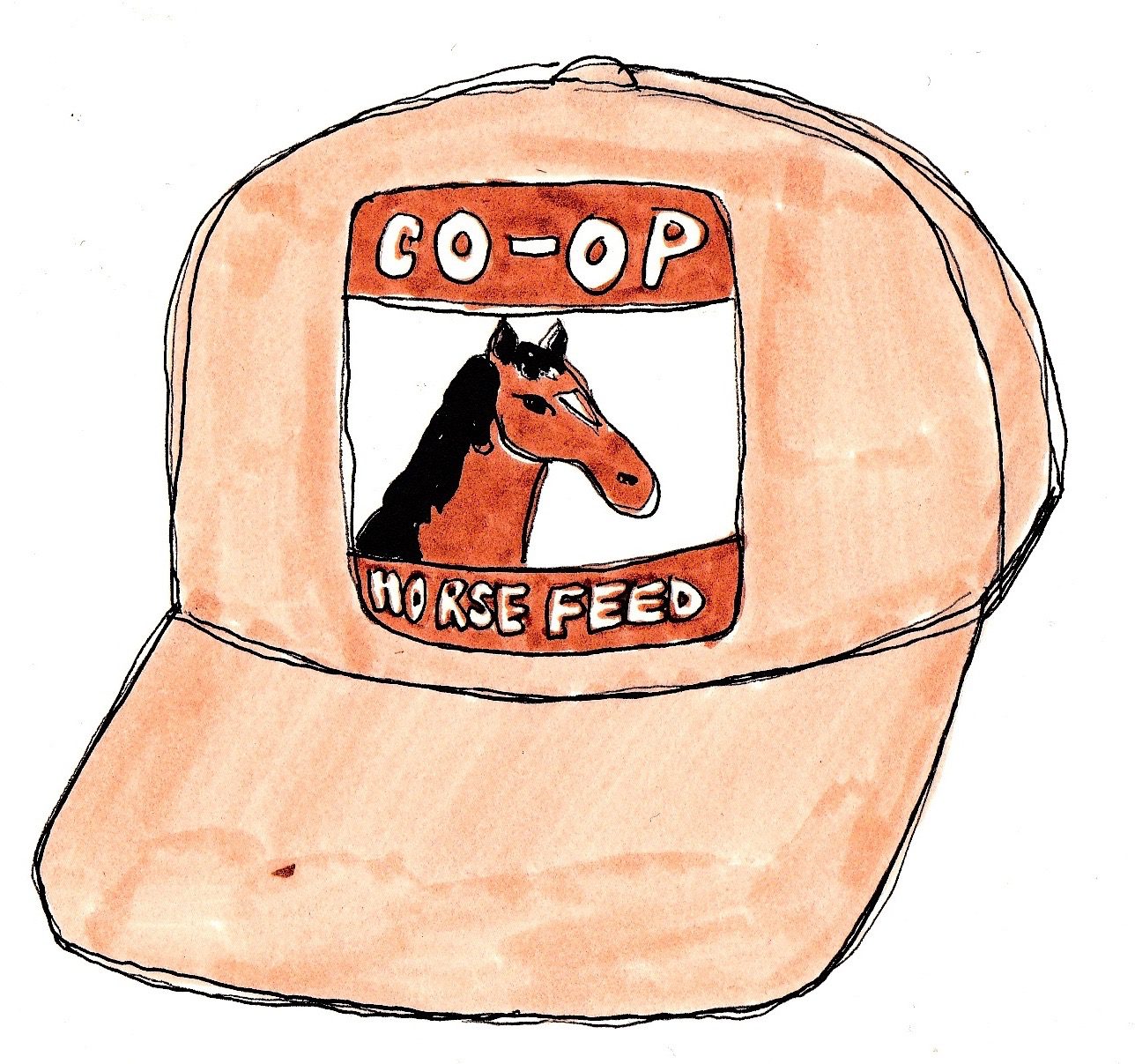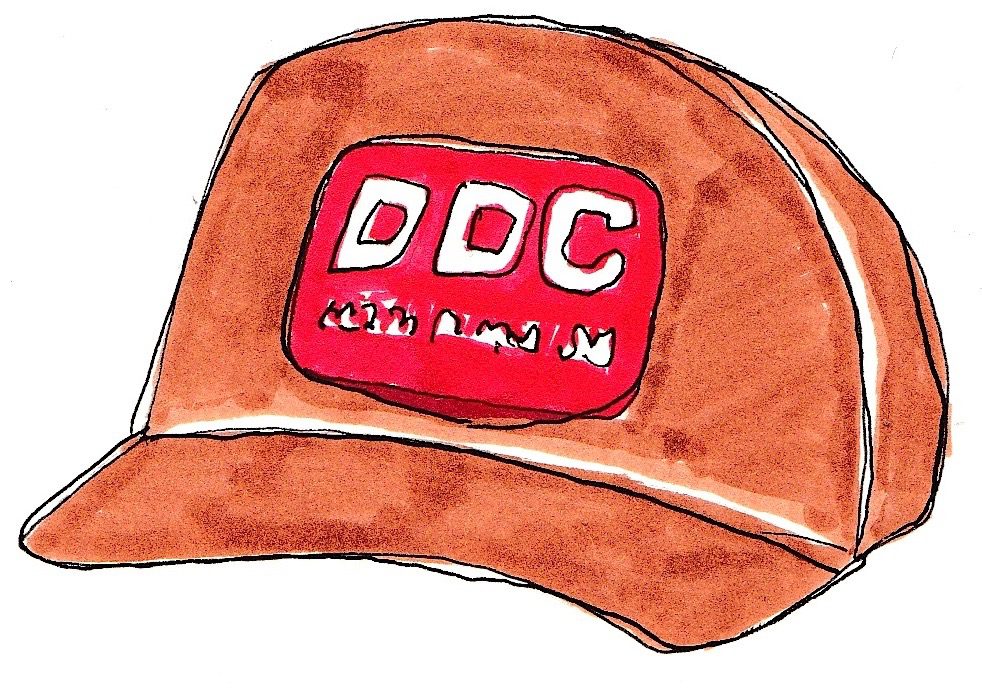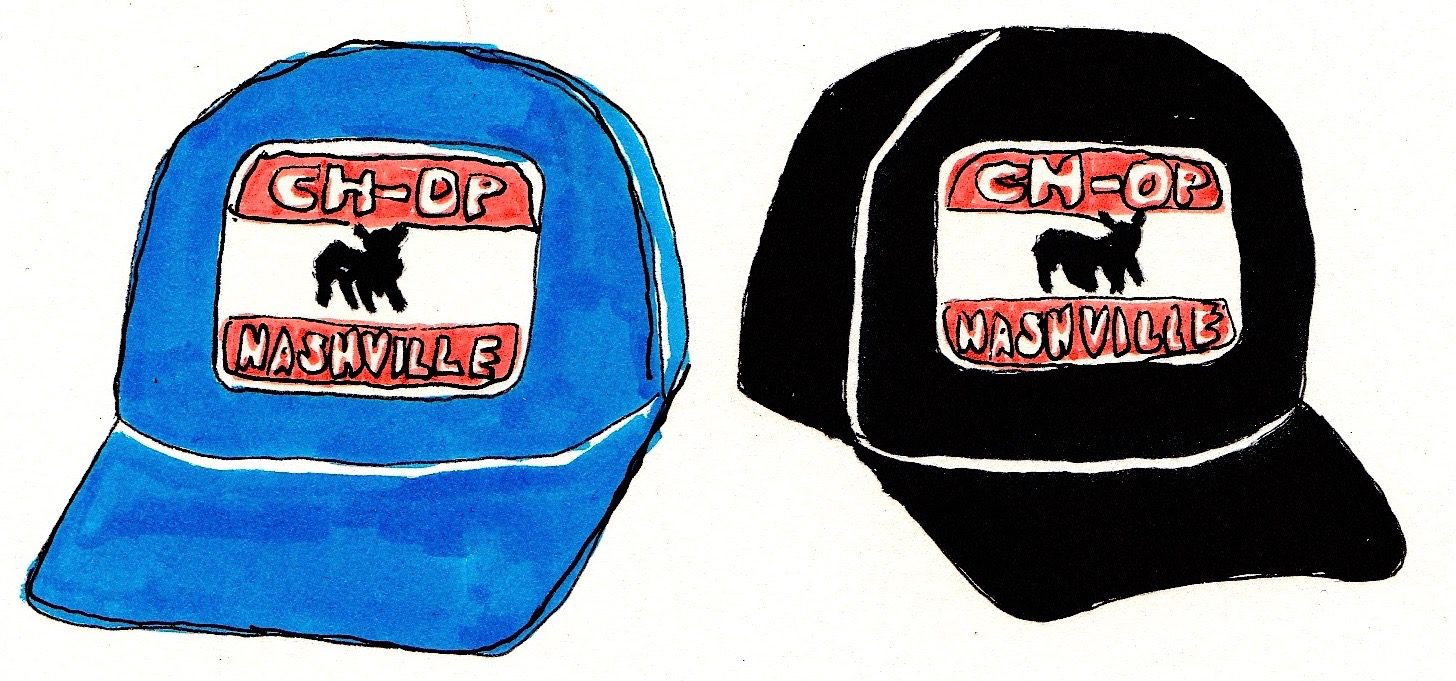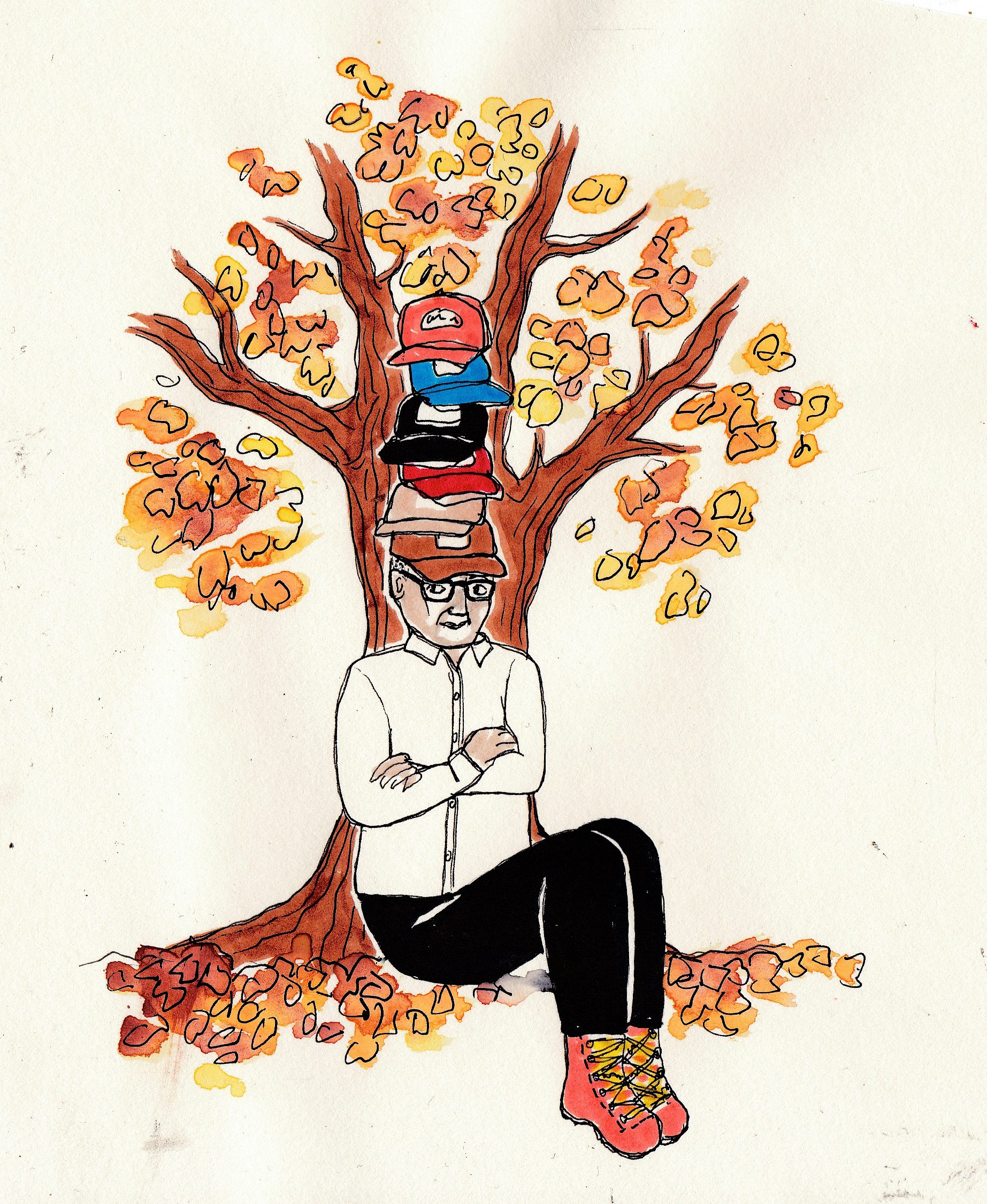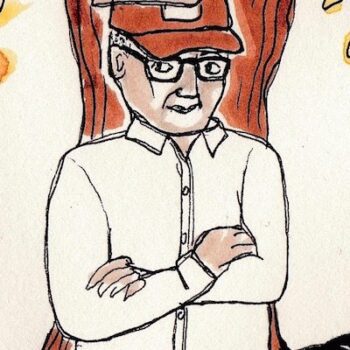
I’ve had hats in my world for, oh god, twenty-five, maybe thirty years! I started wearing them when I was living in Memphis. There was this friend of mine, his name was Michael Enright, and I guess you could say he was my “fashion role model.” Michael lived in a little town called Capleville, which was kind of out in the sticks, but had this cool sense of style—he was very dapper.
Michael would drive around all over the South. He was a great collector, and he would pick up amazing guitars, clothing, and hats. And at some point he started wearing feed hats from this place called “Hi-Fi Feeds.” Keep in mind this was in the early eighties, way before the whole trucker hat phenomenon. One day Michael was wearing a grey one with a mesh back, and I told him it was a snappy look. He offered me the hat, and I enjoyed wearing it, but at the time I didn’t think a whole lot of it.
Then, as age will do, my hair became thinner and the hat became more of a fixture on my head. I really liked that it wasn’t a baseball cap, but a feed hat sold at farmer co-ops that were essentially all over the South. They were pretty accessible, and I could drive maybe twenty, thirty minutes out of town and find a hat for six bucks. The hats were functional, and worked in my world because I was a construction worker in my day job, and I was often sanding and finishing hardwood floors. They also helped me blend in because that’s what everyone else was wearing.
Eventually I started settling on a brand called “CO-OP.” There was this one guy on the site, a great guy whose nickname was “Fat Boy” who had worked his way up in the construction hierarchy, so all he did was putt around on a back loader. Fat Boy had this incredible collection of CO-OP hats, and on Friday nights, when he’d be getting ready to go out, he’d wear this tan one. It was not dirty or anything. It looked like it came straight from the factory. And that started me out specifically buying CO-OP hats. I was taken with the design, the utilitarian purpose, and the fresh, crisp look. There was a CO-OP place in Murfreesboro, which might have thirty different hats at any one time, with patches in every weird variation you can possibly think of. The standard ones were horse feed, pig feed, and beef feed—each with the particular silhouette of the animal.
I try not to think about fashion. It’s more that I want to settle on something to wear so I don’t have to think about it. When the hipster look took hold, I really had to ride that out. It wasn’t just the hats. I wear nothing but white shirts, and I’ve been wearing the same Red Wing boots from when I was sanding floors. It was also my thick, black glasses. I picked what I thought was the most uncool frame, from the dispensary at my eye doctor’s office. My wife just tells me I’m ahead of my time. [Laughs.] But sometimes I find it daunting because I’m not trying to be trendy. I’m about finding something that works for me, and sticking with it, which is the opposite of that.
I don’t consider myself a collector but I have kept every hat I’ve ever had. Right now I have maybe fifteen hats sitting on my desk and I’ve got tons of boxes downstairs that are labeled “old hats.” CO-OP stopped making their hats about five or six years ago, which was a total nightmare for me—and still is! When we heard, my wife started traveling around and buying up as many as she could. I had a stash, which lasted up until about a year or two ago. And now there’s just one original left. It’s black and has a cow on it, and I only break it out for weddings and funerals.
For my everyday hat, I tried to delve into the eBay world to try and find ones similar to CO-OP’s, but you’d be surprised at how just a few little changes in the design of a hat make it unworkable. In my eye, it makes me not look right or feel right. I finally connected with this guy, Aaron Draplin, who has a design group in Portland. He’s a Lambchop fan, and my wife noticed he had hats on his website, and they talked back and forth for a while about where he got them made. Then Aaron was coming into Nashville to give a design talk, and he popped over to my house with this custom hatbox full of hats. From the brim to the crown, he got my aesthetic, and he worked with a company to make me one that’s just right for me.
A few years back, the German label we work with also launched an idea to replicate my old CO-OP hats with a clever patch that read “CH-OP,” and bless their hearts they tried so hard, even contacting Aaron about the specs. It looked okay on paper but when it finally went into production it was a little off. I didn’t have the heart to say it wasn’t quite right, so they went ahead with it, putting it out as merch. Turns out it wasn’t really a hot item, but I think that’s for the best. If I went to a show, and I saw lots of folks out there wearing the hat, I think it would be a little unsettling…
My current hat is always on my head. I mean I would sleep with the damn thing if I weren’t so superstitious. [Laughs.] Sometimes it’s been an issue, for example in Northern England I’ve been stopped from going into clubs and dance places because they think the hat is a gang thing. The same thing happens sometimes when I’m at restaurants of a certain level, when they say, “I’m sorry sir, but you’ll have to remove your hat.” I used to be very grumpy about it, and I’d say, “Well then I don’t need to eat here.” I’ve gotten a little more flexible over time, but I’m not looking forward to the day I’ll have to replace my hat again. I’m a one hat guy, and I’ve come to think of this one as mine.
***
Wanted/Needed/Loved: Musicians and the Stuff They Can’t Live Without is an illustrated column where musicians share the stories behind meaningful objects. As told to Allyson McCabe and illustrated by Esme Blegvad.
***
Kurt Wagner is the singer/songwriter of the Nashville-based alternative country band Lambchop as well as the electronic music project HeCTA. Allmusic has called Lambchop “arguably the most consistently brilliant and unique American group to emerge during the 1990s.” The band’s twelfth album For Love Often Turns Us Still—officially titled FLOTUS—was released on November 4 on Merge. NPR Music has praised “Wagner’s whispery and understated delivery, his way of making even the most willful subversion of songcraft feel intimate and unpretentious.” NYC area readers, please note: On November 13, Kurt Wagner will be joined by filmmakers Bill Morrison and Elise Tyler at Rough Trade NYC to show two short films inspired by songs from FLOTUS. The screening will be followed by a discussion and Q&A with the artists moderated by Yo La Tengo’s Ira Kaplan. This event is free and open to the public.

